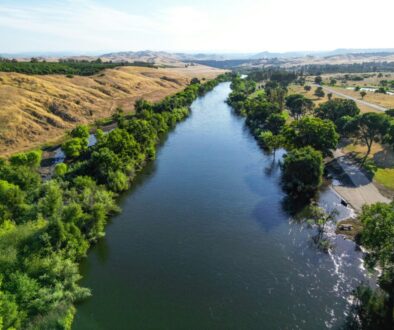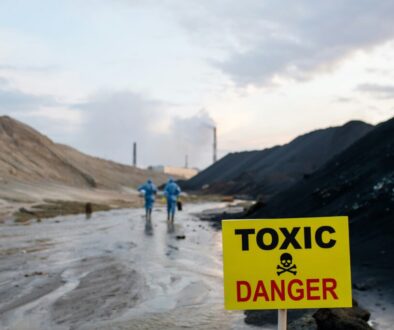Postcard from California: Two refineries to close but fenceline communities still besieged by pollution
 Next year, people in Wilmington and Carson, Calif., neighboring communities in south Los Angeles County, will breathe a bit easier thanks to a decision by Phillips 66 to shut down its gasoline refineries in those communities by the end of 2025.
Next year, people in Wilmington and Carson, Calif., neighboring communities in south Los Angeles County, will breathe a bit easier thanks to a decision by Phillips 66 to shut down its gasoline refineries in those communities by the end of 2025.
For more than 100 years, the twin refineries – five miles apart and connected by a pipeline – have emitted air pollutants that increase cancer risk, trigger asthma and other respiratory illnesses, form toxic smog, and lead to heart attacks and strokes. They emit millions of tons each year of climate-heating greenhouse gases, which also contribute to respiratory problems.
California is not usually thought of as an oil state, but it ranks third in the US in crude oil refining capacity. Hundreds of thousands of Californians are exposed daily to pollution from gasoline refineries. Most are people of color who live in lower-income industrial suburbs where refineries are clustered, but too often are kept in the dark about what happens inside the refinery gates.
As the state moves toward its legally mandated goal of virtually eliminating fossil fuel use in 20 years, and electric car sales continue to rise, more refineries are likely to close. Meanwhile, fenceline communities continue to pay the price for our dependence on gasoline.
Wilmington, with 53,000 residents, is part of Los Angeles. Carson, population 91,000, is its own city. About 90% of Wilmington residents are Latino, about 60% of Carson residents are Latino or Black, and both are state-designated disadvantaged communities.
On the state’s CalEnviroScreen database, which scores communities’ exposure to environmental health hazards from 1 to 100, one Wilmington census tract near the refinery scores 99. Two tracts near the Carson facility score 98.
Wilmington residents’ cancer rate is more than 1.5 times higher than in the regional air quality district as a whole. A 2021 ProPublica analysis of data from the US Environmental Protection Agency (EPA) estimated that the Phillips 66 refineries are responsible for 87% of the excess cancer risk.
“These (refineries) are linked to so much suffering and death that (Phillips) will never pay for,” Alicia Rivera, an organizer with Communities for a Better Environment, told LAist when the closures were announced.
The Philipps 66 refineries are not the only impacts of the oil industry on the communities.
Wilmington and Carson are home to four other refineries, including Marathon Petroleum, the state’s largest. Refineries cover one-fifth of Wilmington’s nine square miles. Another is five miles west in the city of Torrance, where a 2015 explosion at ExxonMobil’s refinery nearly ruptured a tank holding tens of thousands of pounds of hydrofluoric acid gas.
Wilmington also abuts the third-largest oil field in the US, with thousands of drilling rigs, many close to homes or schools. It is closely bounded by freeways that daily carry hundreds of thousands of vehicles, including 40,000 diesel trucks from the adjacent Los Angeles-Long Beach port.
“Wilmington is ground zero for pollution,” Magali Sanchez-Hall, a program manager at the University of California at Los Angeles Institute for Research on Labor & Employment, told CNBC.
She has lived in Wilmington for more than 25 years, but didn’t make the connection between pollution and health risks until she studied environmental law in college.
“Now I understood why people were dying of cancer around me,” she said.
“We’re not disposable people.”
The eastern suburbs of the San Francisco Bay Area are California’s other refinery hot spot. In a 20-mile stretch of the bay shoreline are five refineries in the cities of Richmond, Rodeo, Martinez and Benicia.
Three of the East Bay facilities refine gasoline. Two are being converted to “biorefineries” that produce “renewable” fuels from plants, which still emit hazardous air pollutants. All have a long history of environmental violations.
In October, regional and state regulators fined Valero Energy $82 million for at least 15 years of unreported toxic emissions from its Benicia refinery. The Bay Area Air Quality Management District (BAAQMD) first issued a notice of violation to Valero in 2019, asking the company to stop the releases, but didn’t notify residents or city officials for three years, when it filed a formal abatement order.
“That was the first I had heard of it,” Benicia Mayor Steve Young told KQED-FM.
“We should have been notified by the air district when this was first discovered in 2019, and certainly while negotiations with Valero were going on.”
Two years ago, a malfunction at the PBF Energy refinery in Martinez spewed 20 tons of toxic dust, containing silica and heavy metals, into nearby neighborhoods, coating cars and sidewalks with what children mistook for snow.
PBF did not alert the public or local authorities for 36 hours. Three smaller releases of toxic dust occurred in the following months. A year later, residents said they remained afraid to open their windows.
The FBI and the EPA are conducting ongoing investigations into the incident. The BAAQMD and the Contra Costa County district attorney, as well as some residents, have filed civil suits, seeking unspecified damages.
The most at-risk of the East Bay refinery cities is Richmond, where the skyline is dominated by a huge Chevron refinery. More than 60% of its 114,000 residents are Latino or Black, and one-seventh live in poverty. On CalEnviroScreen, the census tracts nearest the refinery score 96 out of 100.
Residents near the facility are regularly forced to shelter in place after refinery “flaring,” when malfunctions trigger the burnoff of toxic gasses, filling the sky with black smoke and flames. In April, Chevron agreed to pay $20 million to the BAAQMD to settle 678 air quality violations, including eight major flaring incidents, from 2019 to 2023.
After the settlement was announced, an air district official told the Richmond City Council it “would incentivize (Chevron) to stay in compliance.”
But for Chevron, a fine equal to less than one-tenth of 1% of its worldwide profits last year is just the cost of doing business. A new state law, AB 1465, triples maximum fines for refinery violations, but the most common types of infractions still are capped at $30,000 a day.
Chevron “know[s] they’re polluting,” Randy Joseph, an organizer with the community group Reimagine Richmond, told KQED-FM. “They also know … they can get away with it.”
- Bill Walker has more than 40 years of experience as a journalist and environmental advocate. He lives in California’s San Joaquin Valley.
(Opinion columns published in The New Lede represent the views of the individual(s) authoring the columns and not necessarily the perspectives of TNL editors.)
(Featured photo by Dawn McDonald for Unsplash.)
 EWG
EWG


